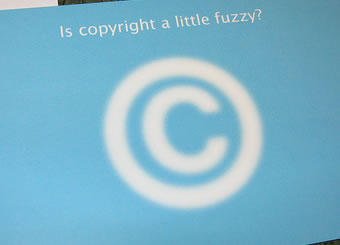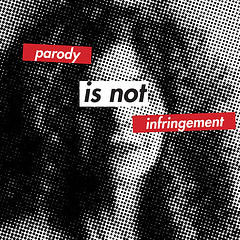Your Copyright Fair Use Crash Course

Are you a blogger or podcaster? Or do you enjoy pro football games? Maybe you make videos for YouTube. You need to know about fair use. It might save your butt someday.
I am a Virginia-licensed attorney, but this article is only for educational purposes.
Copyright infringement defense
People who create original works obtain copyright in their creations. But copyright protection has limits.
If you are accused of violating someone’s copyright, fair use is a potential defense. You have to prove that your actions constituted fair use. How do you prove it?
Rely on the First Amendment
The First Amendment to the U.S. Constitutions intersects with copyright protection at fair use. This defense claims that you’re just exercising your free speech in response to someone’s copyrighted work.
Because of the free speech angle, most fair use cases center on comment & criticism or parody. If you’re just pirating software or stealing someone’s book, you’re out of luck. But if you’re adding creativity and doing more with a work, it might be fair use.
To help your analysis, the Copyright Act sets forth four factors to analyze. Here are some key questions from those factors.
Are you transforming the work?
 If you take a copyrighted work and do something original with it, you can try to claim fair use. You need to transform the work into your own thing that has value.
If you take a copyrighted work and do something original with it, you can try to claim fair use. You need to transform the work into your own thing that has value.
This is where parodies come into the picture, like Weird Al, or the innumerable YouTube clips. They’re generally safe from copyright claims because they’re using a work to make fun of it. Even our stodgy courts value humor!
Do something new and unique.
Is the original fact or fiction?
Copyright doesn’t protect facts. It only protects original creative works. So courts are more likely to find fair use when the original work is non-fiction.
For example, TIME magazine claimed copyright in the Zapruder film of JFK’s assassination. But the copyright fell through when a history book printed stills from the film. The public interest is best served by reprinting and distributing facts.
Be careful with fictional works.
How much are you using?
Fair use won’t let you reproduce a work in its entirety. Always use less than the whole. But how much you can use is anyone’s guess.
Image search engines (like Google Images) can create thumbnails of the images for its index. But you can’t reproduce the “heart” of the work.
Use as little as possible.
What’s the market like?
Copyright helps authors exploit their work for value. If your use harms the market for the original work, you might be in trouble.
This was a key concern in the famous Betamax case (Sony v. Universal). But the entertainment industry couldn’t prove that VCRs were harming their market of viewers.
Don’t harm the market.
Companies to avoid
 Everyone protects their property. Some authors are less concerned about copyright, and some are much more concerned. Watch out for these copyright lions:
Everyone protects their property. Some authors are less concerned about copyright, and some are much more concerned. Watch out for these copyright lions:
- NFL – The National Football League is known as a copyright jerk. It has bullied churches who show the Super Bowl on big screens. It tried to trademark “the Big Game.” And they claim that fair use stops at 45-seconds.
- Disney – They don’t want to lose control over Mickey Mouse, so Disney has fought to extend copyright protection. Where did the public domain go? But you can learn about copyright at Disney’s expense, thanks to this awesome video: A Fair(y) Use Tale.
- RIAA – The Recording guys actually think ripping CDs to your iPod isn’t fair use. And we all know they vigilantly protect their music!
More resources
Fair Use, Free Use, and Use by Permission: How to Handle Copyrights in All Media

Copyright Handbook: What Every Writer Needs to Know
Clearance and Copyright: Everything the Independent Filmmaker Needs to Know
Stanford Copyright & Fair Use Center – Check out the fair use page.
Electronic Frontier Foundation – Tons of information and updates on digital intellectual property issues.
Indiana University – Here’s a handy copyright management center.
Photos by PugnoM, Joe Gratz, penguins never jump!
Get more legal tips
|
See also... |
Comments
13 Responses to “Your Copyright Fair Use Crash Course”

February 10th, 2008
Great post mate. It’s good to know what we can do without worrying about retribution!
February 10th, 2008
Andrew, Great post. Copyright is definitely something all bloggers should think about when posting, especially photos.
It seems like it is a huge gray area where the courts are hopelessly behind the technology. One example that comes up a lot in my circles is how to address scrappers that are blatantly reposting blog feeds.
Folks rightly feel violated when a post they’ve put a lot of effort into shows up on some anonymous blog surrounded by AdSense ads. But with the global nature of the web, what real recourse does the average hobby blogger have?
February 10th, 2008
Andrew, good post. This is an area that people need to know more about.
Having a lawyer who is a blogger is a friend for all.
thom
February 10th, 2008
Andrew,
Thanks so much for this post. I’ve been wondering if anyone would ever sum up copyright stuff for those of us with no clue or background.
Great Post . . .
February 10th, 2008
Great post on fair use. One of the best I have ever seen. I especially like the fact that you point a few companies that are over protective of their works.
Dugg…
February 10th, 2008
Fair Use from NFL to Disney | Deliggit.com…
legalandrew.com
Are you a blogger or podcaster? Or do you enjoy pro football games? Maybe you mak…
February 10th, 2008
Thanks for all your kind words! I’m really glad the post is readable. It’s sometimes difficult to boil these legal concepts down into an easy-to-read post.
Take care, all!
February 11th, 2008
What a very lucid and comprehensive post! You have done well to avoid leaden legalese and made an otherwise difficult subject easy to understand. Still waiting for your crazy tort post though
February 11th, 2008
Modern – I’m glad the post is down-to-earth. That’s always the goal for my writing. And the crazy torts post is coming!
December 5th, 2008